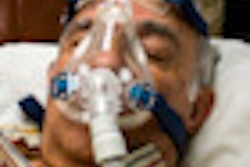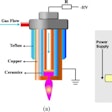
NEW YORK (Reuters Health) - The Centers for Medicare and Medicaid Services (CMS) criteria for coverage of continuous positive airway pressure (CPAP) treatment may be too strict, a study in the October issue of Chest suggests.
According to these criteria -- which were adopted by all four Durable Medical Equipment Medicare Administrative Contractors in 2008 -- patients with obstructive sleep apnea who don't meet high adherence requirements after three months risk losing their coverage for CPAP.
Yet those patients might still be benefiting from CPAP treatment, the new findings show.
"We believe that the proper way to handle adherence is to focus on improving it rather than to punish a patient who struggles with adherence by potentially removing treatment," said lead author Dr. Mark Aloia of Philips Respironics.
The current guidelines "appear not to reflect the value of treatment for individuals with sleep apnea," he told Reuters Health by e-mail.
Local coverage determinations require patient evaluation between the 31st and 91st day of treatment. The physician must document improvement of the obstructive sleep apnea as well as adherence to CPAP treatment, defined as usage at least four hours per night on 70% of 30 consecutive days.
Dr. Aloia and colleagues, supported by the National Institutes of Health, used retrospective data from a sleep disorder center to test the difference in neuropsychological outcomes between patients who met adherence criteria and those who didn't. Adherence was monitored with a microprocessor on the mask that recorded the amount of time it was affixed to the face and whether the proper pressure was being used.
Of 150 patients, 37% didn't meet the new adherence criteria, although two-thirds had received interventions designed to increase adherence. Demographic variables and disease severity did not differ significantly between the groups.
At three months, those in the adherent group had used the CPAP machine an average of 5.6 hours per night, while those in the nonadherent group had used it 1.7 hours.
In both groups, neuropsychological testing showed significant improvements in visual search and attention, auditory vigilance and working memory, set shifting, and sleepiness after Bonferroni correction for multiple comparisons.
There were no significant outcome differences between the adherent and nonadherent groups.
In other words, patients who the new guidelines say are undertreated "still reap benefits from treatment and stand a risk of losing what has become a somewhat effective treatment for their condition," said Dr. Aloia.
"The guidelines allow the patient to return to the sleep laboratory for another sleep study if they are nonadherent to treatment, but there are currently no studies that suggest that such an approach will improve adherence later in the course of treatment and these additional studies incur additional healthcare costs," he added.
"I believe that the guidelines should include a caveat where the treating physician could override the regulations if they document a clinical benefit from treatment after a face-to-face visit and put into place a plan for improving adherence," Dr. Aloia said.
The Centers for Medicare and Medicaid Services did not wish to comment on the new study.
In an editorial, Dr. Lee K. Brown of the University of New Mexico School of Medicine in Albuquerque, echoed the authors' concerns.
"In addition to endorsing (portable monitoring), CMS slipped a Trojan horse into the (national coverage determination)," writes Dr. Brown, noting that he does not currently receive industry funding relevant to this topic.
He notes that earlier studies show clinical benefits even with moderate adherence to PAP treatment.
"As in many therapeutic modalities there exists a dose-response relationship that reinforces the concept that some adherence is better than no treatment at all."
"It is clear that certain categories of patients (low socioeconomic status, unmarried, those with psychiatric comorbidity) will more frequently have difficulty attaining adherence to PAP therapy," he adds. "The (local coverage determinations) arguably discriminate against these individuals by raising additional hurdles for them to jump in order to receive reimbursement for their treatment."
By Frederik Joelving
Source: https://link.reuters.com/dyc37p
Chest 2010; 138: 875-879.
https://link.reuters.com/fyc37p
Chest 2010; 138: 785-789.
Last Updated: 2010-10-07 14:19:08 -0400 (Reuters Health)
Copyright © 2010 Reuters Limited. All rights reserved. Republication or redistribution of Reuters content, including by framing or similar means, is expressly prohibited without the prior written consent of Reuters. Reuters shall not be liable for any errors or delays in the content, or for any actions taken in reliance thereon. Reuters and the Reuters sphere logo are registered trademarks and trademarks of the Reuters group of companies around the world.



















